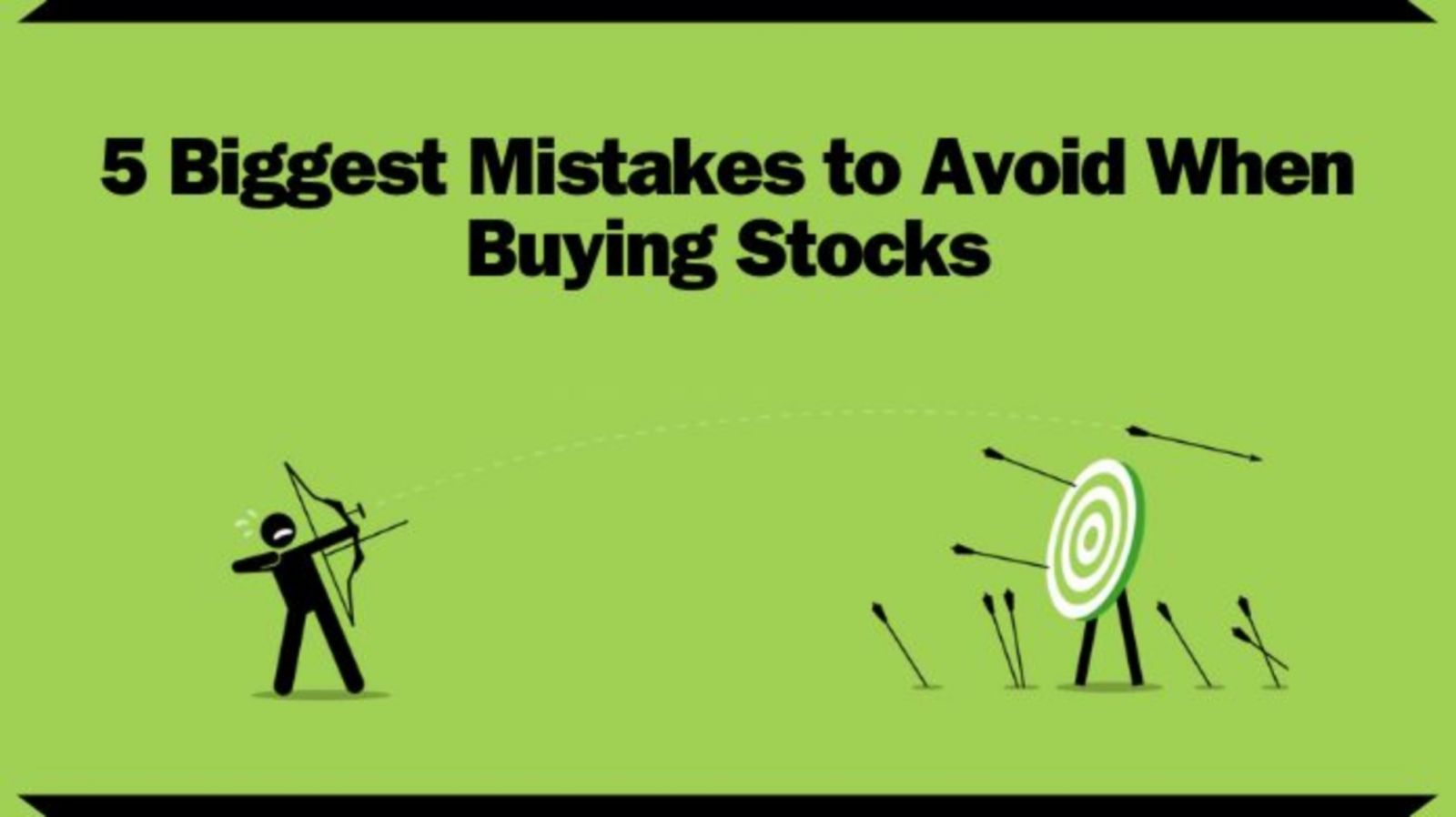5 Biggest Mistakes to Avoid When Buying Stocks [Latest]
The stock market has always been well-known for generating high returns. Gradually, this has become a popular investment alternative for many new investors.
Successful investing demands time, effort, and patience. Navigating the stock market requires caution, as negligence can result in significant financial losses.
In the ever-changing realm of stock market investments, numerous opportunities and risks emerge. Successfully navigating this financial terrain demands thoughtful consideration and strategic decision-making.
When purchasing stocks, ensure to consider the compound annual growth rate (CAGR) to gauge the investment's long-term potential, providing a more comprehensive perspective for informed decision-making.
In this article, we'll delve into the five biggest mistakes to avoid when buying stocks, providing insights that can help you make informed and profitable decisions.
What are Stocks?
Stocks signify ownership shares in a company, granting investors a portion of its profits and assets.
When you buy stocks, you become a shareholder, participating in the company's success or setbacks. Prices fluctuate based on supply, demand, and overall market conditions.
Investing in stocks can offer growth potential, dividends, and a chance to build wealth over time, but it also carries risks.
5 Common Mistakes made by Beginners while Buying Stocks
1. Neglecting Research:
One of the gravest mistakes investors make is diving into the stock market without thorough research. It's essential to understand the companies you're investing in, their financial health, and future growth potential.
Analyze financial statements, study market trends, and stay informed about industry news.
Without a solid understanding, you risk making uninformed decisions that could lead to substantial losses.
2. Timing the Market:
Timing the market is a prevalent mistake, catching even experienced investors.
Predicting short-term fluctuations proves challenging, often resulting in buying high and selling low.
Successful investors prioritize the long-term, staying committed to their strategy and sidestepping impulsive reactions to market volatility.
3. Overlooking Diversification:
Neglecting diversification is a key error, subjecting investors to avoidable risks.
While concentrating funds in one stock or sector may bring substantial gains, it elevates the risk of significant losses.
Diversify by allocating investments across various asset classes, industries, and geographic regions.
4. Ignoring Emotional Biases:
In the stock market, emotional biases like greed, fear, and overconfidence may prompt impulsive decisions, clouding judgment.
Maintaining discipline and rationality is essential, adhering to a predetermined investment strategy to mitigate the impact of emotions on choices.
5. Failing to Set Realistic Goals:
Many investors make the mistake of harboring unrealistic expectations for their investments, which can result in frustration and impulsive decisions.
It's crucial to align financial goals with risk tolerance and time horizon to avoid detrimental investment outcomes.
How to Buy Stocks: A Step-by-Step Guide
Scroll down; here, we'll take you through a step-by-step journey on how to buy stocks, ensuring you make informed decisions aligned with your financial goals.
Step 1: Educate Yourself
Prior to entering the stock market, acquire a solid grasp of its workings.
Step 2: Set Clear Financial Goals
Clarify your financial goals and risk tolerance. Determine if you seek long-term growth, regular income, or a combination.
Step 3: Create a Budget
Decide on a manageable investment amount. It's wise to refrain from risking more than you can comfortably lose.
Step 4: Choose a Reliable Brokerage Platform
Choosing a reliable brokerage is vital for a seamless stock-buying experience.
Step 5: Open a Brokerage Account
After selecting a brokerage platform, proceed with their account-opening process.
Step 6: Research Stocks
Conduct thorough research on the stocks you're interested in. Look at company financials, performance history, and future growth potential.
Step 7: Develop a Diversified Portfolio
Diversify investments across various sectors to minimize the impact of underperformance in one area on your overall portfolio.
Step 8: Place Your Order
After pinpointing your desired stocks, proceed to execute your order.
Step 9: Monitor Your Investments
Regularly monitor your stock portfolio, staying informed about market trends, economic shifts, and relevant news for your invested companies.
Step 10: Stay Informed and Adapt
Stay updated on the dynamic stock market for successful investing.
FAQ's
Q. Is timing crucial in stock buying decisions?
Ans: Focus on long-term trends instead of short-term market fluctuations for more strategic and successful investing.
Q: What's the significance of understanding company fundamentals?
Ans: Knowing financial health, management, and growth potential aids in making informed stock-buying choices.
Q: Should emotion play a role in stock purchases?
Ans: Emphasize rational decision-making; emotions can cloud judgment, leading to potentially detrimental investment choices.
Q: How do you select the right stocks for your investment portfolio?
Ans: Consider your risk tolerance, investment goals, and market trends to build a well-balanced and tailored stock portfolio.
Conclusion
So, by avoiding the above common mistakes, you can increase your chances of success when investing in the stock market.
Remember, successful investing is a journey, not a destination. Stay informed, stay disciplined, and continuously refine your strategy to navigate the complexities of the stock market and achieve your financial goals.




